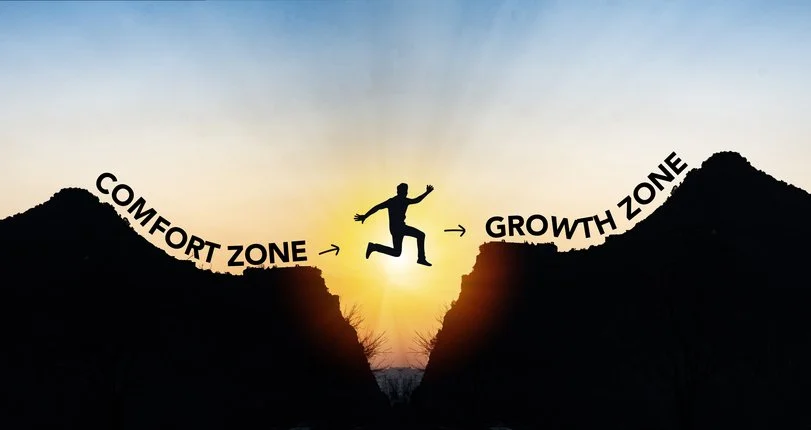Stepping Out of Your Comfort Zone
“Stepping out of your comfort zone” seems to be the phrase of the decade. We often hear it used when someone is describing what enabled them to make a big move in their lives.
The concept of “comfort zone” was first introduced in the early 1990’s by a management thinker named Judith Bardwick. She defined the comfort zone as “a behavioral state within which a person operates in an anxiety-neutral condition, using a limited set of behaviors to deliver a steady level of performance, usually without a sense of risk.”
When we think of “stepping out” of comfort we tend to think of it in terms of big bold steps – a new job, a change in career direction, a major relocation, or a significant change in a relationship status. For these situations, we are often presented with events or options that force us to step back and consider change. Forced to make a choice, we put together a process to evaluate our options and decide to either challenge ourselves with a major change – or determine the status quo is where we want to remain. Regardless of the decision, going through the process itself, typically puts us into discomfort - creating an opportunity for insight. Even if our learning is that where we are, is where we need to be for now, we are changed by the process.
Learning through discomfort should not just be reserved for bold moves, however. Some of the smaller changes we need to make along the way can benefit from the process of moving into discomfort. Think about learning to delegate when you tend to micromanage. The anxiety associated with giving up control can be almost paralyzing.
I think about a leader I worked with recently who realized the needs of his organization had evolved, requiring a transition from a “command and control - tell” style of leading into a coaching style. He described an actual physical discomfort as he worked with his teams to explore their options rather than just telling them what direction he wanted them to take. It took months before he could actually sit comfortably in meetings and ask questions with curiosity, rather than just dictating decisions.
Moving from comfort to growth is a journey that requires us to develop new tools, thought processes, and patterns. It means challenging yourself to try new behaviors and get used to the feeling of being out of rhythm and off balance. It is about learning to constantly build on previous experiences. Where is your comfort no longer serving you, or for that matter, those around you? If you need to feel some level of discomfort in order to grow – maybe it’s time to consider where you might be feeling just a little too cozy. Where are you depending on muscle memory, rather than needing to learn other ways of being? Where are you just doing instead of really thinking?
There is absolutely nothing wrong with enjoying the peace of an anxiety neutral state. There are times when that is exactly what we need. Just be careful not to stay there too long. Limiting the set of behaviors we have to call on is like having a toolbox with only screwdrivers and hammers. They work fine until you suddenly realize the project you are working on requires a wrench and pliers. Challenge yourself to grow and develop new ways of thinking, leading and interacting, even if it doesn’t feel good at first. Odds are good you will be glad you have a more adaptable tool box. Nobody ever learns something new and wishes they hadn’t.
P.S. For more thoughts on what it means to feel comfortable being uncomfortable, listen to this week’s episode of Beyond Neutral with my guest, Jeff Thompson.

